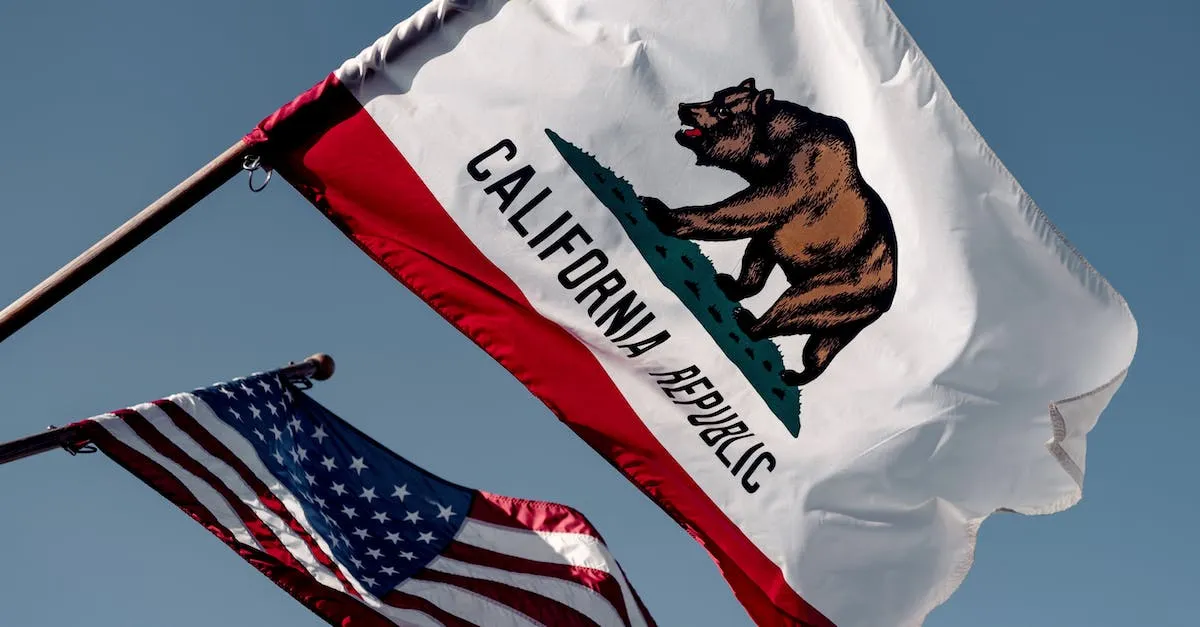Is California A Republic Or A Democracy?
The government of California, like that of the United States overall, contains elements of both a republic and a democracy. Understanding the distinctions between these systems is important for evaluating the structure and operation of California’s government.
If you’re short on time, here’s a quick answer to your question: California is not a pure democracy; it is a democratic republic which combines representative democracy with elements of direct democracy.
Defining Republics and Democracies
When discussing the political system in California, it is important to understand the definitions of republics and democracies. A republic is a form of government in which power is held by the people and their elected representatives.
In a republic, the government operates according to a set of laws and a constitution. On the other hand, a democracy is a system where the power rests with the majority of the people, and decisions are made through direct or indirect participation of the citizens.
Republics: The Power of Representation
In a republic, the citizens exercise their power indirectly by electing representatives who make decisions on their behalf. These representatives are selected through a democratic process such as elections.
The United States, including California, is often referred to as a republic because citizens have the right to vote for their representatives at various levels of government, from local to federal.
One of the key features of a republic is the separation of powers, where the government is divided into different branches, such as the executive, legislative, and judicial branches. This division ensures a system of checks and balances, where no single branch has absolute power.
In California, for example, the governor represents the executive branch, the state legislature represents the legislative branch, and the state judiciary represents the judicial branch.
Democracies: The Power of the People
While republics emphasize representation, democracies prioritize direct participation of the people in decision-making. In a direct democracy, citizens have the opportunity to vote on every issue and policy directly.
However, direct democracy is often impractical in larger societies, so most democracies, including California, operate as representative democracies.
California, as a representative democracy, allows citizens to exercise their power through voting for elected representatives who then make decisions on their behalf. The state holds regular elections for various positions, including the governor, state legislators, and local officials.
This system ensures that the citizens have a voice in shaping the policies and laws that affect their lives.
It is important to note that the terms “republic” and “democracy” are not mutually exclusive. Many countries, including the United States, can be considered both a republic and a democracy. The United States, as a whole, is a federal republic with democratic principles, and California follows the same model as one of its states.
If you want to dive deeper into the topic, you can visit Britannica or History.com for more information on the political structure of California and its place within the broader context of the United States.
California’s Use of Representative Democracy
California, like the United States as a whole, operates under a system of representative democracy. This means that the citizens of California elect representatives to make decisions on their behalf. These representatives, in turn, are responsible for passing laws and governing the state.
One of the key features of California’s representative democracy is the division of power between the state government and local governments. The state government, headed by the governor, has jurisdiction over issues that affect the entire state, such as education, transportation, and healthcare.
Local governments, on the other hand, have authority over matters that are specific to their own jurisdictions, such as zoning regulations and public safety.
The California State Legislature
The California State Legislature is the main body responsible for making laws in the state. It is made up of two houses: the Assembly and the Senate. The Assembly has 80 members, each representing a specific district within the state, while the Senate has 40 members, with each member representing a larger district.
Both houses of the legislature play a vital role in shaping California’s laws and policies. They debate and vote on proposed bills, and if a bill is passed by a majority in both houses, it goes to the governor for approval or veto.
This system ensures that decisions are made through a process of deliberation and compromise.
Elections and Citizen Participation
In California, elections play a crucial role in the democratic process. Citizens have the opportunity to vote for their representatives at various levels, including the governor, state legislators, and local officials.
These elections allow the people of California to have a say in who represents them and what policies are enacted.
Citizen participation in California’s democracy goes beyond just voting. The state encourages citizens to engage in public discourse, attend town hall meetings, and voice their opinions on various issues.
It is through this active participation that the needs and concerns of the people are brought to the attention of their elected representatives.
Comparison with a Republic
While California operates as a representative democracy, it is important to note that the terms “republic” and “democracy” are often used interchangeably. In fact, the United States is often referred to as a democratic republic.
A republic, in its broadest sense, is a form of government in which power resides with the people and is exercised through elected representatives. This aligns with California’s system of representative democracy, where the people elect representatives to make decisions on their behalf.
Direct Democracy in California
California is a state known for its unique political system that combines elements of both a republic and a democracy. One of the key features of California’s political landscape is its use of direct democracy, which allows citizens to participate directly in the decision-making process.
Initiative Process
The initiative process is a crucial aspect of direct democracy in California. Through this process, citizens can propose new laws or changes to existing laws by collecting signatures and placing the proposed measure on the ballot for a statewide vote.
This gives Californians the power to shape legislation directly, bypassing the traditional legislative process.
For example, in 2018, California voters had the opportunity to vote on Proposition 6, which sought to repeal a gas tax increase. This initiative was placed on the ballot through the collection of signatures by citizens who opposed the tax.
Ultimately, the measure was rejected by voters, highlighting the influence of direct democracy in shaping policy outcomes.
Referendum and Recall
In addition to the initiative process, California also utilizes referendums and recalls as part of its direct democracy framework. A referendum allows citizens to reject or approve a law that has been enacted by the state legislature.
This gives the people the power to challenge decisions made by their elected representatives.
On the other hand, a recall allows voters to remove an elected official from office before their term is up. This mechanism gives Californians the ability to hold their elected officials accountable and directly participate in the democratic process.
Benefits and Challenges
The use of direct democracy in California has both benefits and challenges. On one hand, it allows for greater citizen involvement in the decision-making process and gives individuals the opportunity to directly shape policy outcomes. This can lead to a more engaged and informed electorate.
However, direct democracy can also have its drawbacks. The initiative process, for example, can be prone to manipulation by special interest groups who have the resources to collect signatures and fund campaigns.
This can result in measures being placed on the ballot that may not necessarily be in the best interest of the state as a whole.
Furthermore, the sheer volume of initiatives and referendums on the ballot can be overwhelming for voters, making it difficult for them to fully understand the complexities of each measure. This can lead to uninformed decisions or voter fatigue.
Despite these challenges, direct democracy remains an integral part of California’s political system. It provides citizens with a unique opportunity to directly participate in the democratic process and have a say in the laws that govern them.
For more information on direct democracy in California, you can visit the official website of the California Secretary of State here.
Other Relevant Aspects of California’s Government
While the question of whether California is a republic or a democracy may be a topic of debate, there are other important aspects of California’s government that are worth exploring. These aspects shed light on the unique characteristics of the state’s political system and provide a deeper understanding of how it operates.
The California State Constitution
One key aspect of California’s government is its state constitution. The California State Constitution serves as the fundamental law of the state and outlines the structure and powers of the government.
It establishes the framework for how California is governed and provides a set of principles and guidelines that shape the state’s political landscape.
The California State Constitution has been amended numerous times since its adoption in 1879, reflecting the changing needs and priorities of the state. It covers a wide range of topics, including the separation of powers, the role of local governments, and the protection of individual rights.
Understanding the provisions of the state constitution is crucial for comprehending the functioning of California’s government.
The Three Branches of Government
Similar to the federal government, California’s government is divided into three branches: the executive, legislative, and judicial branches. Each branch has its own distinct powers and responsibilities, ensuring a system of checks and balances.
The executive branch is headed by the Governor, who is the state’s chief executive and is responsible for implementing and enforcing laws. The legislative branch consists of the California State Legislature, which is comprised of two houses: the State Assembly and the State Senate.
The legislative branch is responsible for creating and passing laws. The judicial branch is made up of the state’s courts, which interpret and apply the law.
The Role of Political Parties
Political parties play a significant role in California’s government and politics. The state is known for its diverse and politically engaged population, which has led to the rise of influential political parties.
The Democratic Party has traditionally held a strong presence in California, but the state also has a significant Republican Party presence. Additionally, there are other smaller parties and independent candidates that contribute to the political landscape.
Political parties in California have a considerable influence on policy-making and elections. They play a crucial role in mobilizing voters, shaping public opinion, and supporting candidates running for office.
Local Government Structure
California’s government is not only centralized in Sacramento but also operates through a system of local governments. The state is divided into 58 counties, each with its own county government, and numerous cities and municipalities that have their own local governments.
Local governments in California have the power to make decisions and pass laws on issues that directly affect their communities. They have jurisdiction over matters such as zoning, public safety, education, and transportation.
This decentralized structure allows for more localized decision-making and ensures that the diverse needs of California’s regions are properly addressed.
Evaluating California’s System
When discussing the political system of California, it is crucial to evaluate whether it is a republic or a democracy. The answer to this question lies in understanding the principles and structure of the state’s government.
The Republic System
California operates as a republic, where power is vested in the people who elect representatives to make decisions on their behalf. This system is based on the belief that elected officials should act in the best interest of the citizens and be accountable for their actions.
The California State Legislature, consisting of the Senate and Assembly, is responsible for creating and passing laws that govern the state.
In a republic, elected officials are chosen through democratic processes, such as elections. The people have the power to vote for their representatives, who in turn make decisions and enact laws on their behalf.
This system ensures that the government is responsive to the needs and desires of the citizens.
The Democratic Aspects
While California operates as a republic, it also incorporates democratic principles into its system. The citizens have the right to vote on various issues and initiatives through direct democracy, a process known as ballot propositions.
This allows the people of California to participate directly in the decision-making process and have a say in important matters that affect their lives.
Moreover, California has a system of checks and balances to prevent the concentration of power in any one branch of government. The executive, legislative, and judicial branches all have specific roles and responsibilities, ensuring that no single entity becomes too powerful.
Conclusion
In summary, California incorporates elements of both a republic and a democracy. While some features such as the election of representatives are associated with a republic, the provisions for direct democracy through initiatives and referendums make California more democratic than a pure republic. However, it is not a pure direct democracy either. Understanding these distinctions provides insight into how California fits into broader conversations about types of democratic governments.








